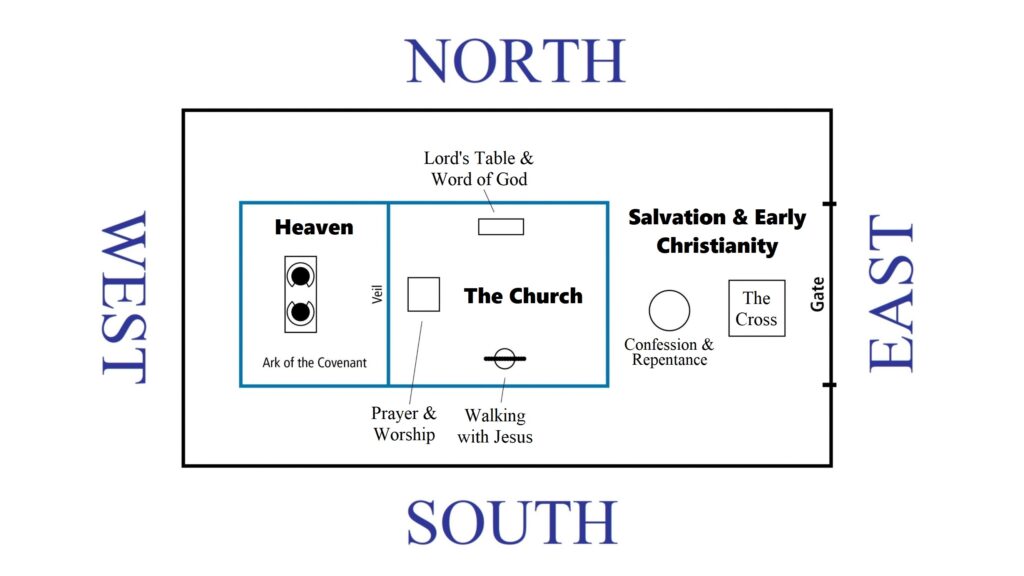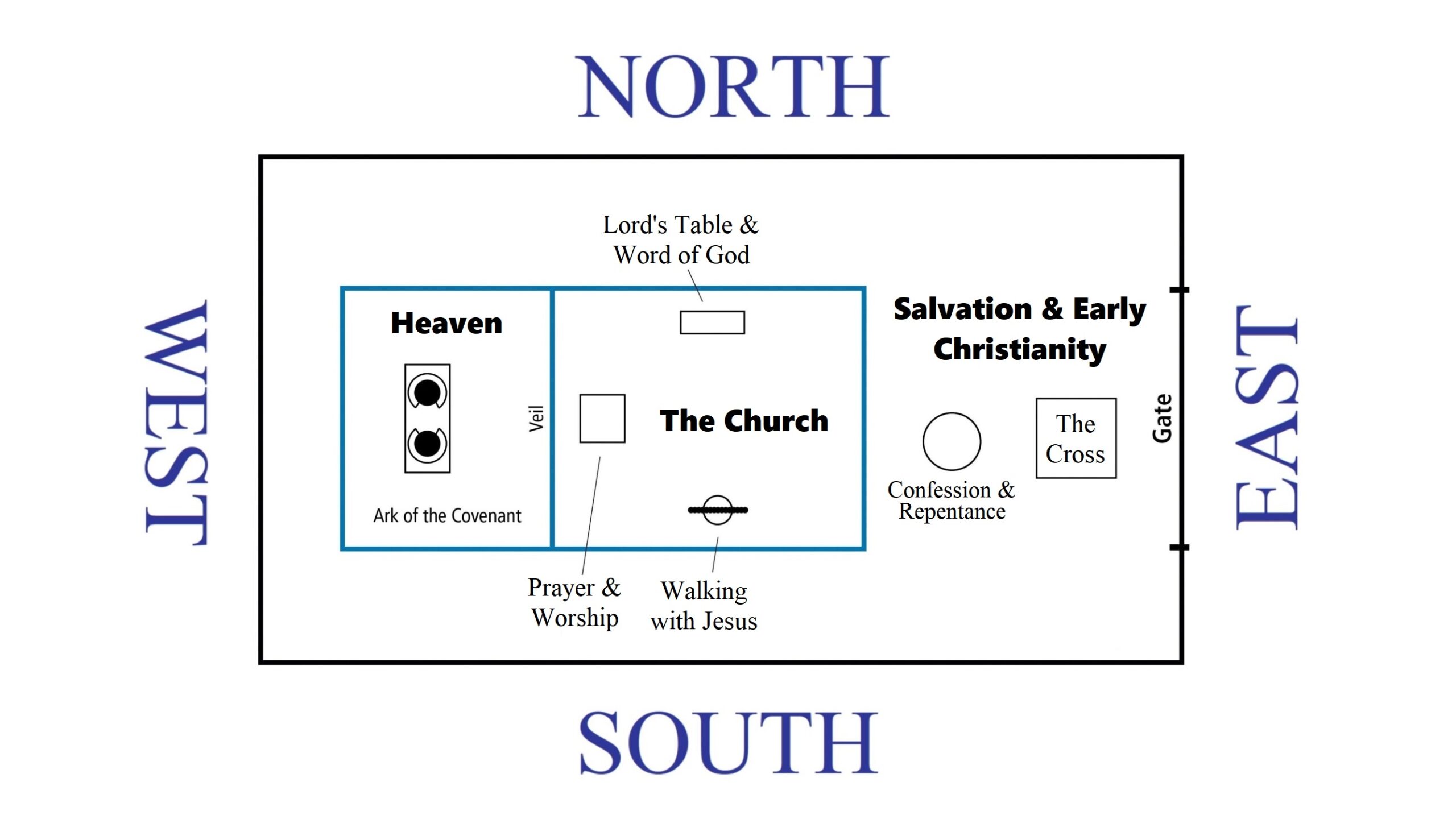- Discuss the biblical theme of ‘East.’ Traveling East often pictures a movement away from the Presence of God: Adam & Eve were driven East of the Garden when they sinned (Gen. 3:24); Cain, after killing his brother, traveled East (Gen. 4:16); Abraham gave his nephew Lot the choice of where he wanted to settle: “Lot journeyed east,” a land that included Sodom and Gomorrah (Gen. 13:11).

The entrance to the Tabernacle complex was on the East side (Exodus 27:13). This meant that to enter the Outer Court (toward the direction of the Presence of God in the Holy of Holies), one had to travel West. The High Priest on the Day of Atonement (Yom Kippur) traveled from the Outer Court, through the Holy Place, and into the Holy of Holies with sacrificial blood to sprinkle before and on the Ark of the Covenant. In so doing, he was symbolically reversing the footsteps of Adam and signaling a return to God. What insights can you derive from this? Consider Psa. 103:12 in this context: just how far is East from West?
- Think of the times when you were ‘traveling East’ in your life, either as an unbeliever or as a carnal believer. What was your life like then? Did you experience joy? Peace? God’s love? How about the times (hopefully, right now!) when you were ‘traveling West’? What was life like at those times? How was the experience of joy, peace, love and the other fruits of the Spirit different compared to times when you were ‘traveling East’ (Galatians 5:22-23)? Is it helpful to think of the Christian life as either (1) a westward movement toward spiritual maturity or (2) an eastward movement toward carnality? Why or why not?
- The purpose of a ‘veil’ was to separate or shut off. What were the three ‘veils’ of the Tabernacle for?
- The veils were made of scarlet/purple, red, blue and white (Exodus 38:18a). What do these four colors signify? See: Blue, Exodus 24:9-10, Ezekiel 1:26, 28; Red, Leviticus 17:11, Hebrews 9:22; Purple, Judges 8:26; White, Psalm 51:7, Isaiah 1:18. How do these colors speak of Christ? What adorned the Inner Veil of the Tabernacle that was not on the other two veils? Why? What was their purpose?
- How was Jesus’ body a “veil” (Hebrews 10:19-20; cf., Matthew 17:1-6).
- I made the point that we ‘like’ veils, especially if we want to play around with sin. However, we all have to deal with Hebrews 4:13. What does this mean for our practical Christian life? What does it mean to live life with the awareness of God’s continual gaze?
- Consider the desire of God’s heart in these verses: James 4:8, Hebrews 4:16, Psalm 145:18, Matthew 11:28-30. What does God/Jesus desire in these passages?
- Consider the diagram of the Tabernacle on the flip side of this sheet. What do you think of its comparison of the Tabernacle and its furnishings with the Christian life?

